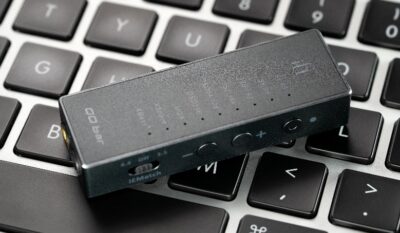How to filter digital audio
If we exclude digital filters (which are a whole other can of worms), to create filters, we require electronic parts that change with frequency in predictable ways.
1. Simple Filter – goes so far
The simplest filters combine just a single resistor and either an inductor or a capacitor. The problem is that such simple filters are not very selective. They impact the signal little, but also do not do much for the noise.
(see also: http://en.wikipedia.org/wiki/Electronic_filter#Passive_filters)
We normally need better selectivity than we can get that way.
2. Passive Filter – good in theory, not easy in practice
One way is to use combinations of multiple resistors with inductors and capacitors. This is called a passive filter.
With real capacitors and inductors such a filter can remain effective to as high as 100MHz. So it can very effectively filter not just the images but also the switching noise.
Quality inductors take space and cost money and it is often difficult to find inductors that do not cause substantial distortion themselves. This is why this method is rarely seen today, even though it approaches an ideal filter quite closely and of course was used in early generation digital equipment.
3. Active Filter – another way to skin a cat
The other way is to use an active filter. Here we only use resistors and capacitors and “simulate” inductors using amplification. This means we rely on the amplification function of the active element to shape the filtering.
– one key advantage other than getting rid of inductors is that active filters allow the designer much, much freedom in trade-offs between selectivity and filter impact on the signal.
– another advantage is that these filters are widely documented and are easily calculated and modelled.

Source: http://www.sussex.ac.uk/Users/pjly20/ras100_clip_image002_0000.jpg
(see also: http://en.wikipedia.org/wiki/Active_filter )
There is a downside. Most of the common amplifier elements loose amplification as frequencies rise. Many audio Op-Amps will have no remaining gain at frequencies above a few MHz. So at very high frequencies the filter no longer filters as it should.
So such active filters are easier and cheaper to implement than adequate passive filters and can filter the so-called images well. But they struggle to filter the switching noise from the DAC as well, or indeed often at all.
Decisions decisions, what is one to do?
In the end it is the choice of the designer how to make sure all the different requirements are met and how trade-offs between mutually exclusive requirements are arranged.
In the iDSD nano we rely only on passive filtering, but the filter selectivity is not as extreme as with other iFi DACs.
In the iDSD micro, iDAC2 micro and the DAC in the Retro Stereo 50 we use a combination of passive and active filtering, using very wide bandwidth Op-Amps.
In the iDSD Pro, budget/size constraints are less of an issue and thus we can implement a fully-passive filter.
Think of the nano iDSD as BMW M1, micro iDSD/iDAC2 as M3 and Pro iDSD as the M5.
Each has its own price and engine/performance characteristics to suit different users.
(As a small side note, as we develop our code in-house, we “remap” the onboard XMOS (among other things) to push them beyond the theoretical read: datasheet specs. As is evident from the Quad-DSD256 and Octa-DSD512 on the iFi platform. So our M-line is beyond the factory version.)
Before you ask, for those car buffs among you, the BMW i8 is the reserve of AMR.










